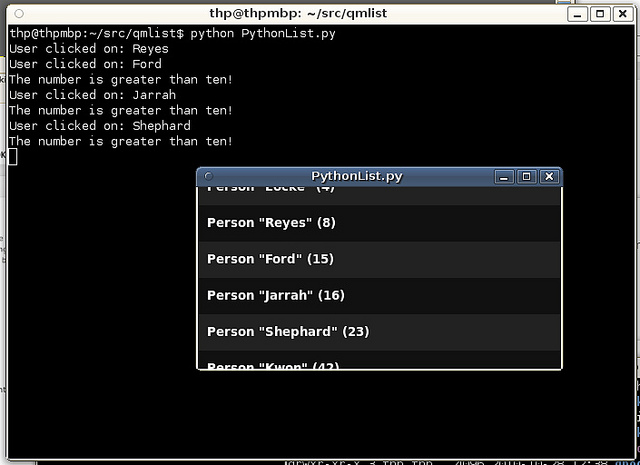Qt Slot Parameter
Bookmakers Services Our Qt Slot Pass Parameter site Qt Slot Pass Parameter enables visitors to read honest real players’ reviews that are posted by customers of some of the best brands in the iGaming industry. Get to know more about leading betting mobile apps that are.
- Signals and slots are loosely coupled: A class which emits a signal neither knows nor cares which slots receive the signal. Qt's signals and slots mechanism ensures that if you connect a signal to a slot, the slot will be called with the signal's parameters at the right time. Signals and slots can take any number of arguments of any type.
- Qt's signals and slots mechanism ensures that if you connect a signal to a slot, the slot will be called with the signal's parameters at the right time. Signals and slots can take any number of arguments of any type. They are completely type safe.
- Stylish Watch; HP laptop; Women Fashion Sandals; Cool cap for hot summer; Perfect Gents shirts.
- Qt signal slot naming convention Mar 13, 2016 (Aside: If you are wondering about my naming convention, I developed a style when using Qt early on (c. 2000) where signals are named signalFoo and slots are named slotFoo.
Qt5 Tutorial Signals and Slots - 2020
In this tutorial, we will learn QtGUI project with signal and slot mechanism.
File->New File or Project...
Applications->Qt Gui Application->Choose...
We keep the class as MainWindow as given by default.
Next->Finish
Let's open up Forms by double-clicking the mainwindow.ui to put gui components:

From the Widgets, drag Horizontal Slider and Progress Bar, and place them into the main window. Then,
Run the code. Now, if we move the slider, the progress will reflect the changes in the slider:
We did it via gui, but we can do it via direct programming.
Let's delete the signal and slot, and write the code for the signal and slot mechanism in the constructor of the MainWindow class as shown below:
Qt Connect Parameters

Signals and slots are used for communication between objects. The signals and slots mechanism is a central feature of Qt and probably the part that differs most from the features provided by other frameworks.
In GUI programming, when we change one widget, we often want another widget to be notified. More generally, we want objects of any kind to be able to communicate with one another. For example, if a user clicks a Close button, we probably want the window's close() function to be called.Older toolkits achieve this kind of communication using callbacks. A callback is a pointer to a function, so if you want a processing function to notify you about some event you pass a pointer to another function (the callback) to the processing function. The processing function then calls the callback when appropriate. Callbacks have two fundamental flaws: Firstly, they are not type-safe. We can never be certain that the processing function will call the callback with the correct arguments. Secondly, the callback is strongly coupled to the processing function since the processing function must know which callback to call.
In Qt, we have an alternative to the callback technique: We use signals and slots. A signal is emitted when a particular event occurs. Qt's widgets have many predefined signals, but we can always subclass widgets to add our own signals to them. A slot is a function that is called in response to a particular signal. Qt's widgets have many pre-defined slots, but it is common practice to subclass widgets and add your own slots so that you can handle the signals that you are interested in.
The signals and slots mechanism is type safe: The signature of a signal must match the signature of the receiving slot. (In fact a slot may have a shorter signature than the signal it receives because it can ignore extra arguments.) Since the signatures are compatible, the compiler can help us detect type mismatches. Signals and slots are loosely coupled: A class which emits a signal neither knows nor cares which slots receive the signal. Qt's signals and slots mechanism ensures that if you connect a signal to a slot, the slot will be called with the signal's parameters at the right time. Signals and slots can take any number of arguments of any type. They are completely type safe.
All classes that inherit from QObject or one of its subclasses (e.g., QWidget) can contain signals and slots. Signals are emitted by objects when they change their state in a way that may be interesting to other objects. This is all the object does to communicate. It does not know or care whether anything is receiving the signals it emits. This is true information encapsulation, and ensures that the object can be used as a software component.
Slots can be used for receiving signals, but they are also normal member functions. Just as an object does not know if anything receives its signals, a slot does not know if it has any signals connected to it. This ensures that truly independent components can be created with Qt.You can connect as many signals as you want to a single slot, and a signal can be connected to as many slots as you need. It is even possible to connect a signal directly to another signal. (This will emit the second signal immediately whenever the first is emitted.)


- from Signals & Slots